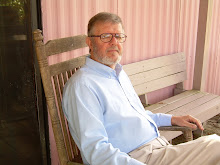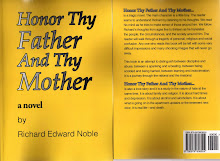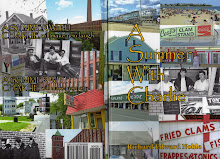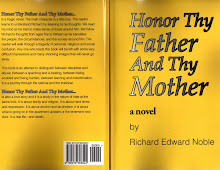The Eastpointer
The Tricks of the Trade
By Richard E. Noble
As with all types of hard, physical work there are always “tricks to the trade.” Oystering is no exception.
Number one, all physical work causes pain. You must do any physical work long enough to grow accustomed to the pain. From my experience it doesn’t matter what type work you had been doing prior to a new physical job. Every type of physical work affects different muscles. Topping onions was the only job that I ever had that hurt my toes. Tonging oysters, of course, affected the back, shoulders and arms. Whenever we had a layoff from oystering it took me a week or two before the aches and pains once again became tolerable.
Despite what many people think, oystering requires experience and know-how. Culling the oysters is an art. A good culler can make a big difference in production.
When we first started, Marion Millender jumped onto our boat one day and demonstrated his skill at culling for four or five minutes. Just watching him that first time was enough to give us the proper idea and start us on the right track. Where you hit the oyster to separate it from another oyster or other oysters is important. Being able to flip that clump around with one hand and smack the appropriate oyster with the culling iron in your other hand was a money maker.
We started our oystering adventure on Cat Point. Cat Point is a giant oyster bar. You don’t have to drag around trying to find oysters. The Cat Point bar fills the space between Eastpoint and the Island - just follow the telephone poles. The oysters extend west to the Island Bridge and east about a hundred or so yards. The trick when oystering Cat Point is knowing when you are on good oysters or just spinning your wheels.
My wife liked to work in scrappy areas as opposed to areas filled with clusters and clumps. We had an ongoing argument until one day she brought out our alarm clock - neither of us liked to wear a watch. We compared scrappy areas with areas filled with clumps and clusters. Where there were clumps and clusters I could deck up the cull board and then sit-down and help with the culling. In the scrappy areas I had to move faster with my tonging just to keep up with my wife’s culling and I never got the opportunity to sit-down. We found by extensive experimenting that we could fill bags faster in the scrappy areas than in the clump and cluster areas. In the scrappy areas there are more single oysters – oysters that need or require little culling.
We never stayed anywhere that took us more than a half hour to cull one bag or one bushel. The best spot I ever remember sitting on, Carol culled a bag every ten minutes. No matter what time of the year or season, we tried to keep under a half hour a bag. Of course there were times when a half hour was impossible but even in those times we kept moving and timing our production.
I eventually ended up maintaining three sets of tongs. I had a short handled pair with 8 to 10 ft. handles for the winter and working inshore on the low tides. We had some of our best days oystering inshore on those cold winter mornings with that punishing north wind. If we could stay close enough inshore the trees on the land would protect us somewhat from that cold wind. A second cull board used as a wind break didn’t hurt either.
I had a regular set of 12 to 14 foot handles for working most of the bay. And then I kept a pair of 16 to 18 foot tongs for late in the year when everything had been worked to death. We made the 18 foot handles ourselves. With those big tongs I could go off to deeper water along the edges of the bed and find spots that hadn’t been worked at all.
Another big thing with physical work is pacing yourself. It is one thing to go out and run up and down the deck for an hour or two. But that doesn’t work out too well when you plan on staying out for 8 to 12 hours in one day.
Many people think that having a big motor is important. If you have to travel to a bed it is, but if you are working someplace like Cat Point or you have a good trailer where you can dump your boat in close to the beds it really doesn’t matter all that much.
One season my wife and I worked between the 1 and 3 pole on Cat Point for the entire season. We had this old 25 Johnson that was dying on us. We didn’t want to buy a new motor so we pushed that little Johnson until it finally started dying. A few times a friendly stranger towed us home and on 2 or 3 occasions we had to pole ourselves back to shore using our thick bamboo poling rods. We used to get the thick bamboo poles up highway 65 at the first or second bridge.
“The Eastpointer” is R.E. Noble most recent publication. It consists of a series of selected columns from the Franklin Chronicle. It is available now at Amazon.com or from the author. Local bookstores or businesses who would like to sell The Eastpointer or other books written by R. E. Noble should contact the author for specials and discount opportunities. Richard Noble is a freelance writer who has lived here in Eastpoint for nearly 30 years.
skip to main |
skip to sidebar


G.E. Nordell's List of Labor History books
Search This Blog
Popular Posts
-
Bea’s Sandwich Shop Lawrence, Mass - My Hometown By Richard E. Noble Bea’s sandwich shop was a big memory for those of us...
-
John Pierpont Morgan 1837- 1913 By Richard E. Noble “Morgan the Magnificent - If ever there thrived a money potentate whose fortune was p...
-
Jews, God and History By Max I. Dimont Book Review By Richard Edward Noble Max I. Dimont is an ex-shoe salesman and unskilled la...
-
Social Security Commentary By Richard E. Noble The original Social Security legislation was passed in 1935. It covered employees w...
-
IF I WERE A BUTTERFLY By Richard E. Noble If I were a butterfly, I could flap my wings, and fly from flower to flower... Hour... upon hour ....
-
The Hobo Philosopher Rice Cakes – Yummy, Yummy. By Richard E. Noble My wife, over the past 30 years, has probably been on every di...
-
Politically Incorrect Humor/Commentary By Richard E. Noble Obviously, I grew up in the age of political incorrectness. Clearly I was raised ...
-
The Eastpointer Why do mullet jump? By Richard E. Noble Mullet has been a staple of life for decades here in Franklin County. Most other pl...
-
Lawrence – My Hometown Lennie’s on the Turnpike Richard E. Noble Being a jazz buff from early on my favorite nightspot was Lennie’s on the T...
-
Lawrence - My Hometown The Den Rock Drive-in By Richard E. Noble The Den Rock drive-in was on route 114 before the Den restaurant and pa...
Hobo Notes
Licensed book sellers and distributors - buy my books wholesale
Books by Richard Edward Noble. Click on covers below for more info and purchasing instructions.
Bloggin' Be My Life
It's All About Love
A Little Something
Bits and Pieces
A Baker's Dozen
Cat Point - and Them Dang Oyster People
The Eastpointer
A Summer with Charlie - Lawrence
Hobo-ing America
"Just Hangin' Out Ma"
That Old Gang of Mine
Come On-A My House
Standing on the Corner is # 6 in the lawrence My Hometown series.
Honor Thy Father and Thy Mother
Noble Notes on Famous Folks
Mein Kampf - An Analysis of Book One
America on Strike
Talk Radio - Lawrence, Ma. WCCM
Richard Edward Noble

About Me

- Richard Edward Noble
- MY NAME IS RICHARD EDWARD NOBLE. I AM A FREELANCE WRITER AND I HAVE PUBLISHED 12 BOOKS:"THE EASTPOINTER" - SELECTIONS FROM AWARD WINNING NEWSPAPER COLUMN - "A LITTLE SOMETHING" - POETRY WITH PROSE -"HONOR THY FATHER AND THY MOTHER" - A NOVEL ABOUT GROWING UP IN THE NEW ENGLAND MILL TOWN OF LAWRENCE, MASS, "HOBO-ING AMERICA" - A WORKINGMAN'S TOUR OF THE U.S.A. - "A SUMMER WITH CHARLIE" - THE STORY OF A YOUNG SAILOR'S LAST DAYS AT SALISBURY BEACH, "NOBLE NOTES ON FAMOUS FOLKS" - HUMOROUS ANECDOTES ON FAMOUS FOLKS IN HISTORY, "AMERICA ON STRIKE" HISTORY BOOK - A SURVEY OF LABOR STRIKES IN AMERICA; "A BAKER'S DOZEN" A BOOK OF HUMOROUS SHORT STORIES; "JUST HANGIN' OUT, MA" - GROWING UP IN THE 40'S, 50'S AND 60'S IN LAWRENCE, MY HOMETOWN, "TENEMENT DWELLERS" - SEQUEL TO JUST HANGIN OUT, MA; MEIN KAMPF - ANALYSIS OF BOOK ONE - HISTORY. CAT POINT - AND THEM DANG OYSTER PEOPLE - SEQUEL TO THE EASTPOINTER All 12 BOOKS ARE AVAILABLE ON AMAZON.COM, BARNES AND NOBLE AND OTHER INTERNET SOURCES OR FROM NOBLE PUBLISHING. ALL 12 OF MY BOOKS ARE NOW ON KINDLE AT BARGAIN PRICES TOO. IF YOU WOULD LIKE MORE INFORMATION ABOUT DISCOUNTS AND SPECIAL OFFERS E-MAIL ME. MY EMAIL IS ON MY PROFILE PAGE.
Robert Reich
Come Home America
Darcia Helle - "No Justice"
25 GreatThinkers Everybody Should Read
Followers
Writer's journal
My Blog List
Blog Archive
-
▼
2008
(164)
-
▼
December
(11)
- Kant
- Our $2000 Mattress
- The Tricks of the Trade
- Andrew Johnson (president from 1865-1869, 17th) By...
- Rousseau
- The EastpointerOne man’s trashBy Richard E. Noble ...
- 1952 Steel StrikeStriking AmericaBy Richard E. Nob...
- The Hobo PhilosopherSupply and DemandBy Richard E....
- Cocktail Sauce Syndrome
- Hitler and ConservatismBy Richard E. Noble Making ...
- The EastpointerPoverty and the New DepressionBy Ri...
-
▼
December
(11)




































